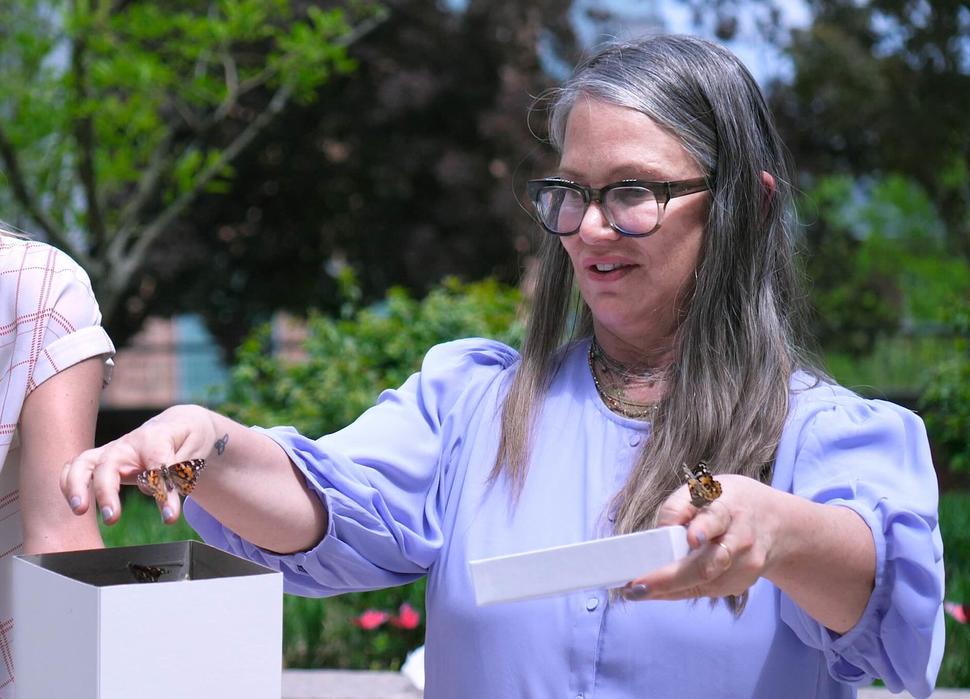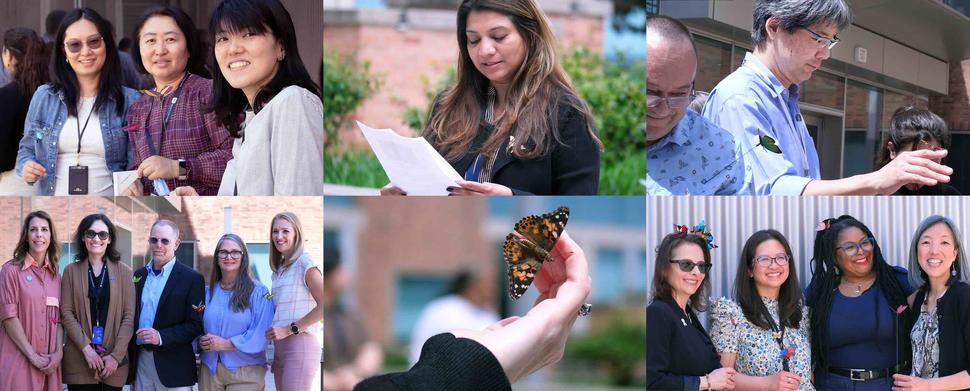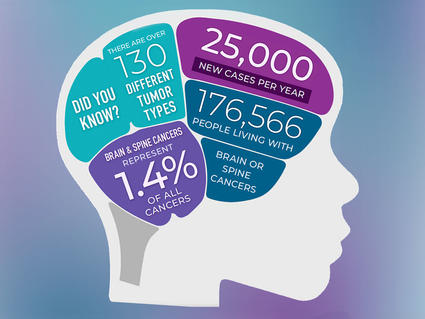A Celebration of Hope for the Brain and Spine Tumor Community
, by Brittany Cordeiro, NCI-CONNECT Program Manager
NCI-CONNECT raised awareness for ependymoma and honored patients, care partners, and medical professionals in a butterfly release event at NIH.
On the warm and sunny afternoon of April 18, NIH neuro-oncology professionals gathered to release butterflies and raise awareness for ependymoma, a rare central nervous system (CNS) tumor.
The butterfly is a symbol of hope chosen to represent Ependymoma Awareness Day, a global advocacy event held annually since 2012 by the Collaborative Ependymoma Research Network (CERN) Foundation, a program of the National Brain Tumor Society. Each May, butterflies are released at locations around the world to honor people living with the disease, recognize care partners and medical workers, and support ependymoma research efforts. This year, the 13th Annual International Ependymoma Awareness Day will be celebrated on Sunday, May 5.
An estimated 1,335 people are diagnosed with an ependymoma each year in the United States. The NCI-CONNECT Clinic and Neuro-Oncology Clinic at NIH see about 300 patients with brain or spine tumors each year. Ependymomas are the third most common tumor type seen.
“We believe we see more adults with ependymoma than any other institution in the country,” said Terri Armstrong, Ph.D., co-leader of NCI-CONNECT and senior investigator at the NCI Center for Cancer Research’s Neuro-Oncology Branch (NOB). “Being able to celebrate Ependymoma Awareness Day at NIH with the clinical care providers and researchers that are making a difference for patients was really special.”
About 35 neuro-oncology professionals, along with CERN’s executive director, Kimberly Wallgren, gathered on a patio at the NIH Clinical Center. Attendees learned about the purpose of the day and its history, heard poems from survivors, and then released the butterflies.
“Ependymoma is a major area of interest in the Neuro-Oncology Branch and one of the most important rare CNS cancers. Much of the seminal work done in rare cancers has been focused on ependymoma,” said Mark Gilbert, M.D., co-leader of NCI-CONNECT and chief of the NOB.
The CERN Foundation was established in 2006 to improve care and outcomes for people with ependymoma. Under the guidance of Dr. Gilbert, CERN enabled the first prospective clinical trial in adult patients with ependymoma, which led to a change in treatment guidelines. Drs. Armstrong and Gilbert were also part of an international collaboration that discovered 10 new subtypes of ependymoma, showing the need for more targeted treatments based on a tumor’s molecular features.
“The NCI-CONNECT program was built following the CERN paradigm of studying a rare cancer. Now, we investigate over 12 rare cancers, including ependymoma, as part of NCI-CONNECT,” Dr. Gilbert said.
Marta Penas-Prado, M.D., NCI-CONNECT senior clinician, was overjoyed to share the day with colleagues. “It gives me hope that we can come together to recognize that ependymoma—like other brain and spine tumors—is an important area of research,” she said. “There are many investigators working together to develop better treatments.”
“Today, we work to raise awareness of ependymomas, provide community for patients and caregivers, and offer hope based on the foundational work done and being done by our clinicians and researchers every day,” Dr. Armstrong said.


